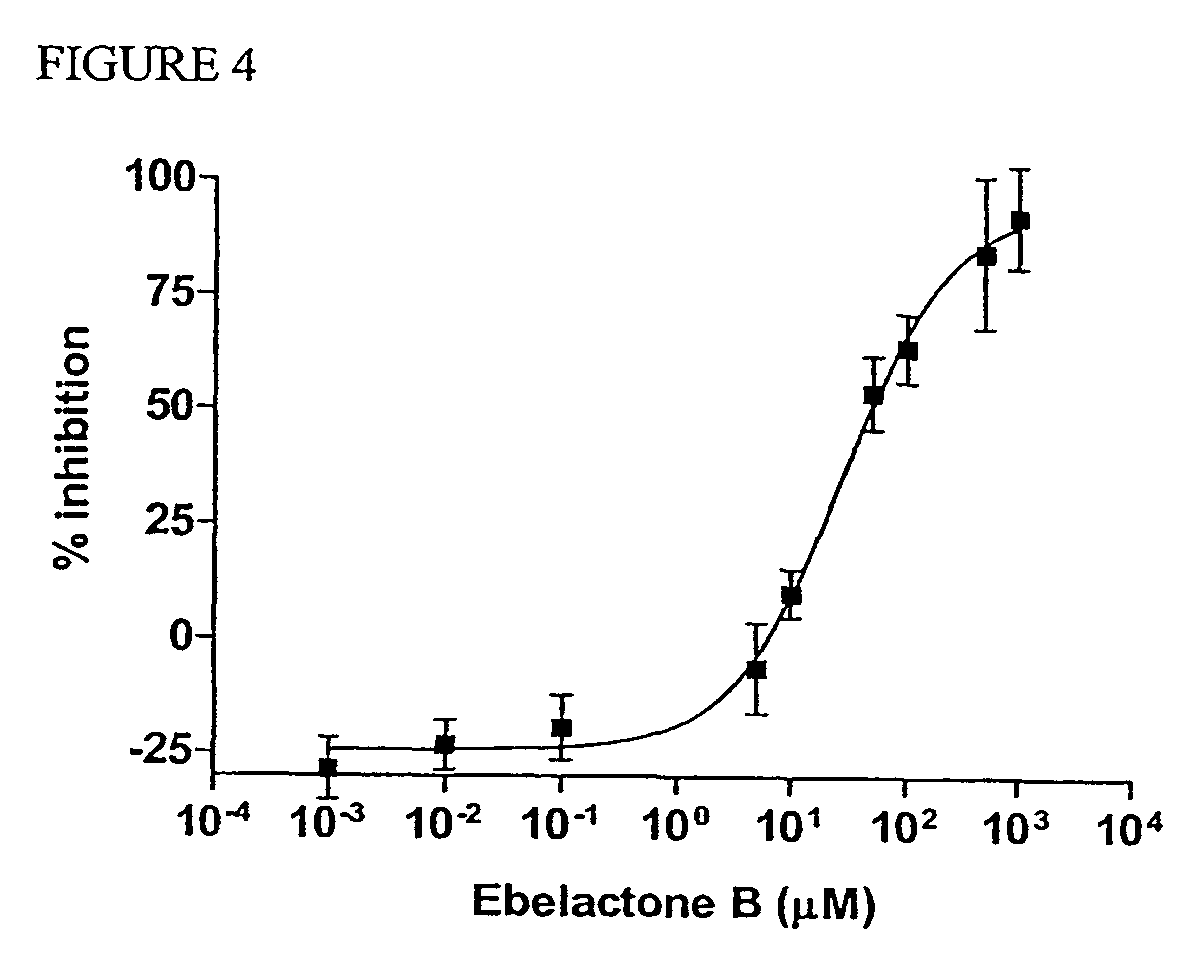Biotin-peg-substrate for a lipase assay
a technology of biotin and substrate, applied in biochemistry apparatus and processes, instruments, inks, etc., can solve the problems of difficult automation, inconvenient screening of a large number of samples at the same time, and no hts techniques have been made available for screening of lipase enzyme activity
- Summary
- Abstract
- Description
- Claims
- Application Information
AI Technical Summary
Benefits of technology
Problems solved by technology
Method used
Image
Examples
example 2
A Screening Assay for a Lipase Using Scintillation and Imaging Proximity Assay Technologies
Method
[0074]96-well SPA format. Using an ‘on bead’ assay format, 180 nM lipase substrate (i.e. HSL substrate prepared by the method described in Example 1) was added to streptavidin coated yttrium silicate (YSi) beads (Amersham Pharmacia Biotech) at 5 mg / ml and 10% (v / v) Triton™ X-100 in the ratio of 1:3:2. Triton X-100 was added to prevent non-specific binding of the tritiated product to beads. Assays contained 20 μl substrate precoated SPA beads (6 nM lipase substrate, 50 μg beads, 0.67% (v / v) Triton X-100), 5 nM lipase and assay buffer (50 mM Hepes, pH 7.5, 1 mM dithioerythritol (DTE) and 0.001% (v / v) C13E12) in a volume of 100 μl. In ‘no enzyme’ controls, approximately 15000 SPA cpm were obtained. After incubation for 60 minutes at room temperature with agitation, assays were stopped by the addition of 100 μl 0.1M sodium citrate / citric acid, pH 4.0 and counted on a TopCount™ microplate sci...
example 3
Cleavage of Lipase Substrate by Other Lipases
[0082]The standard assay format (as described in Example 2 above) was performed with lipase enzymes derived from number of different sources. The results are shown in FIG. 7.
example 4
[0083]Inhibition of HSL Activity by PMSF
[0084]The inhibition of HSL activity by PMSF was investigated using the standard assay format (as described above in Example 2) and 14.35 mM to 1.44 nM PMSF. Assays were incubated at room temperature for 60 minutes.
[0085]An IC50 value of 16.3 μM was obtained. In similar experiments, IC50 values of 4.8, 10.6 and 16.7 μM were obtained. Results are shown in FIG. 8.
PUM
| Property | Measurement | Unit |
|---|---|---|
| pH | aaaaa | aaaaa |
| volume | aaaaa | aaaaa |
| pH | aaaaa | aaaaa |
Abstract
Description
Claims
Application Information
 Login to View More
Login to View More - R&D
- Intellectual Property
- Life Sciences
- Materials
- Tech Scout
- Unparalleled Data Quality
- Higher Quality Content
- 60% Fewer Hallucinations
Browse by: Latest US Patents, China's latest patents, Technical Efficacy Thesaurus, Application Domain, Technology Topic, Popular Technical Reports.
© 2025 PatSnap. All rights reserved.Legal|Privacy policy|Modern Slavery Act Transparency Statement|Sitemap|About US| Contact US: help@patsnap.com



